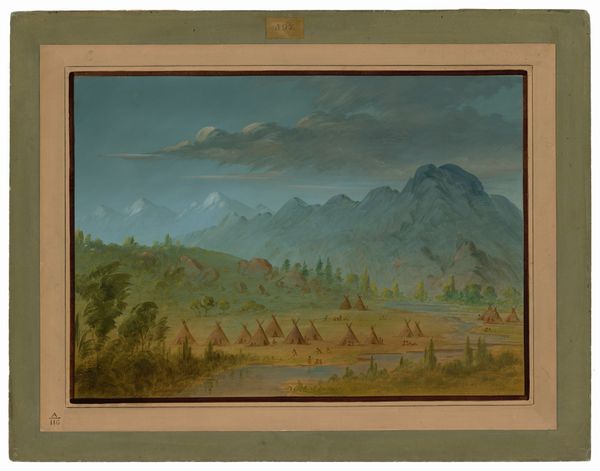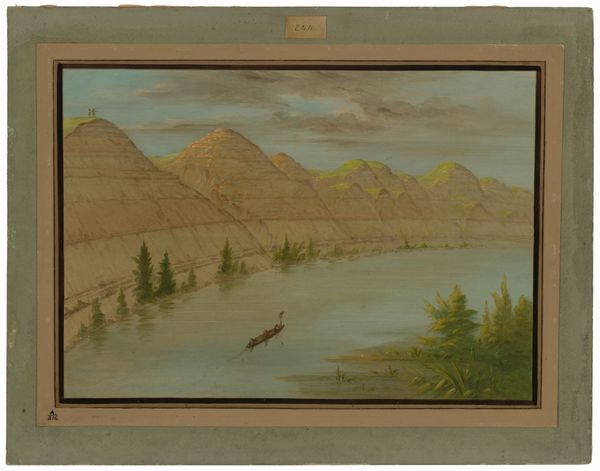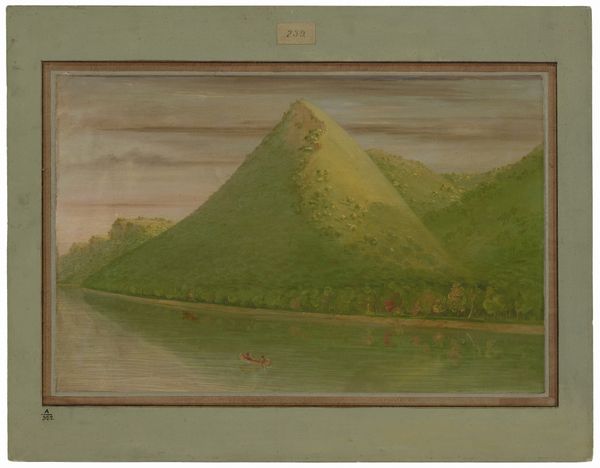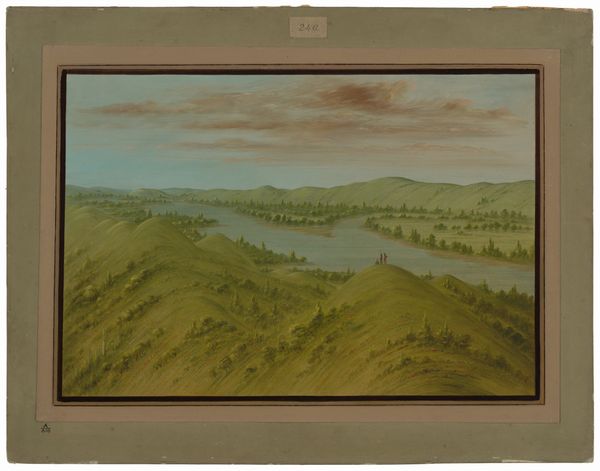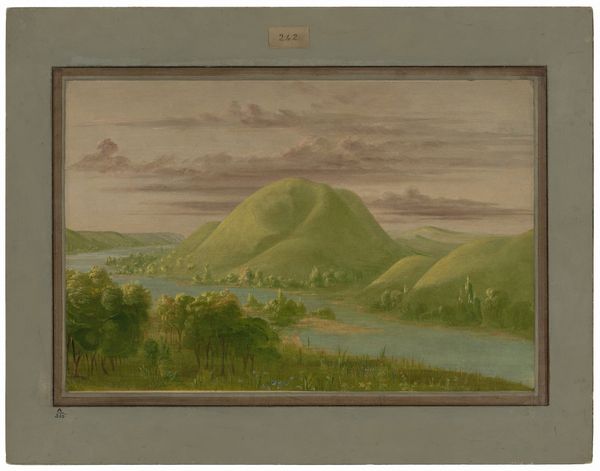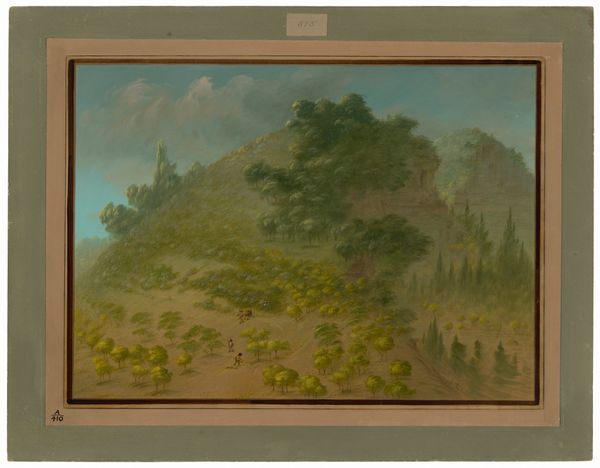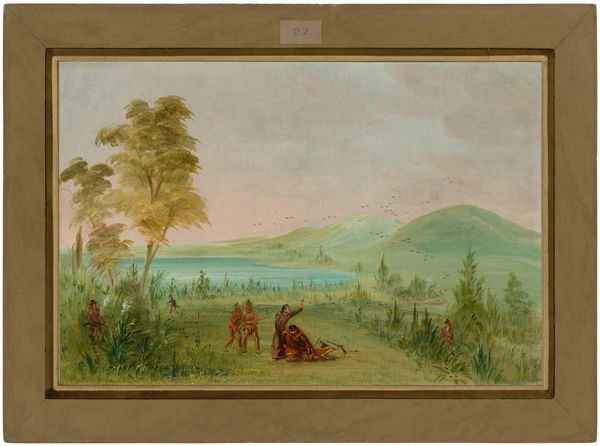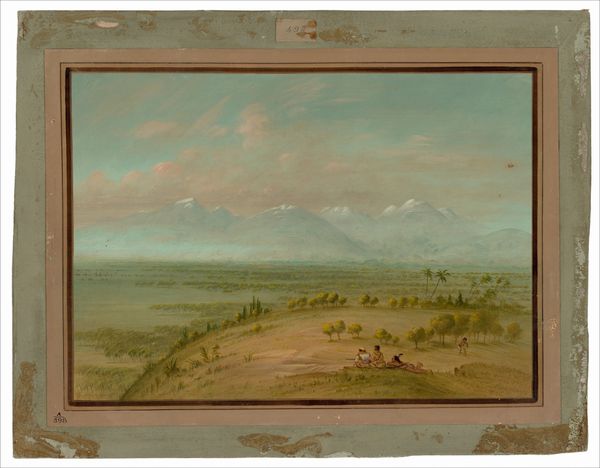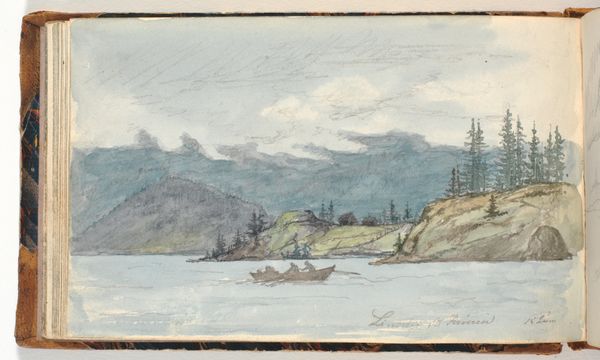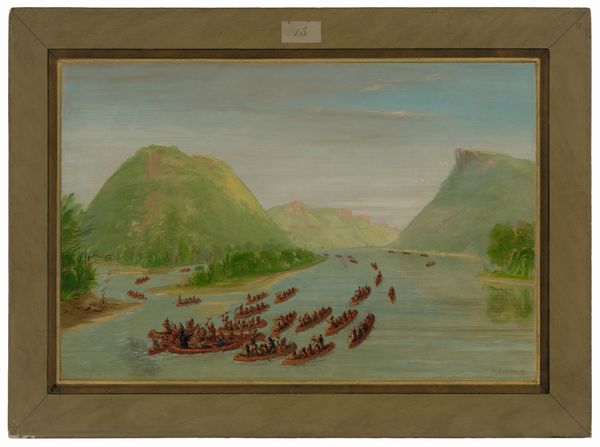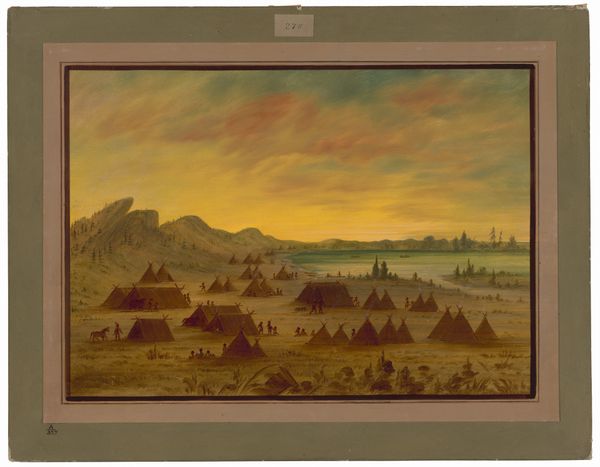
Father Hennepin Leaving the Mississippi to Join La Salle. May 8, 1680 1847 - 1848
0:00
0:00
painting, oil-paint
#
painting
#
oil-paint
#
landscape
#
oil painting
#
romanticism
#
genre-painting
#
history-painting
Dimensions: overall: 37.8 x 56.4 cm (14 7/8 x 22 3/16 in.)
Copyright: National Gallery of Art: CC0 1.0
Editor: So, this is "Father Hennepin Leaving the Mississippi to Join La Salle. May 8, 1680" by George Catlin, painted sometime between 1847 and 1848, using oil paints. There's something…pastoral, almost naive, about it. The landscape seems idealized. What stands out to you? Curator: The fascinating aspect here lies in examining the very material conditions of representation. Look closely at how Catlin uses oil paint—the layering, the blending, and the deliberate depiction of the landscape. How does the materiality of paint contribute to the narrative of exploration and encounter that he is trying to convey? It’s crucial to consider this within the broader context of westward expansion and its associated industries. Editor: I see what you mean. It’s not just a pretty picture, it's an artifact of a specific historical moment and related to the industry of... painting as well as colonialism? Curator: Precisely. Consider also the means by which Catlin himself gained access to these landscapes and the labor involved in creating these paintings. Did he make on-site studies or did he rely on others' accounts? And how did his paintings become commodities that circulated in a growing art market, furthering a particular image of the American West? Editor: So the painting's more than just its surface; it's linked to broader economic and social structures. It makes me consider Catlin’s role differently - less a simple observer, and more of an actor within that history. Curator: Indeed. And it challenges us to investigate the narratives we often take for granted in historical paintings like this. Are we seeing the “truth” of the event, or a constructed version shaped by the material conditions of its creation and the social context of its consumption? Editor: This has completely transformed my understanding; I was looking at the scenery when I should have been looking at the painting's own history. Curator: It’s about uncovering the hidden stories embedded in the materiality of art, and acknowledging its participation in the shaping of our understanding.
Comments
No comments
Be the first to comment and join the conversation on the ultimate creative platform.
